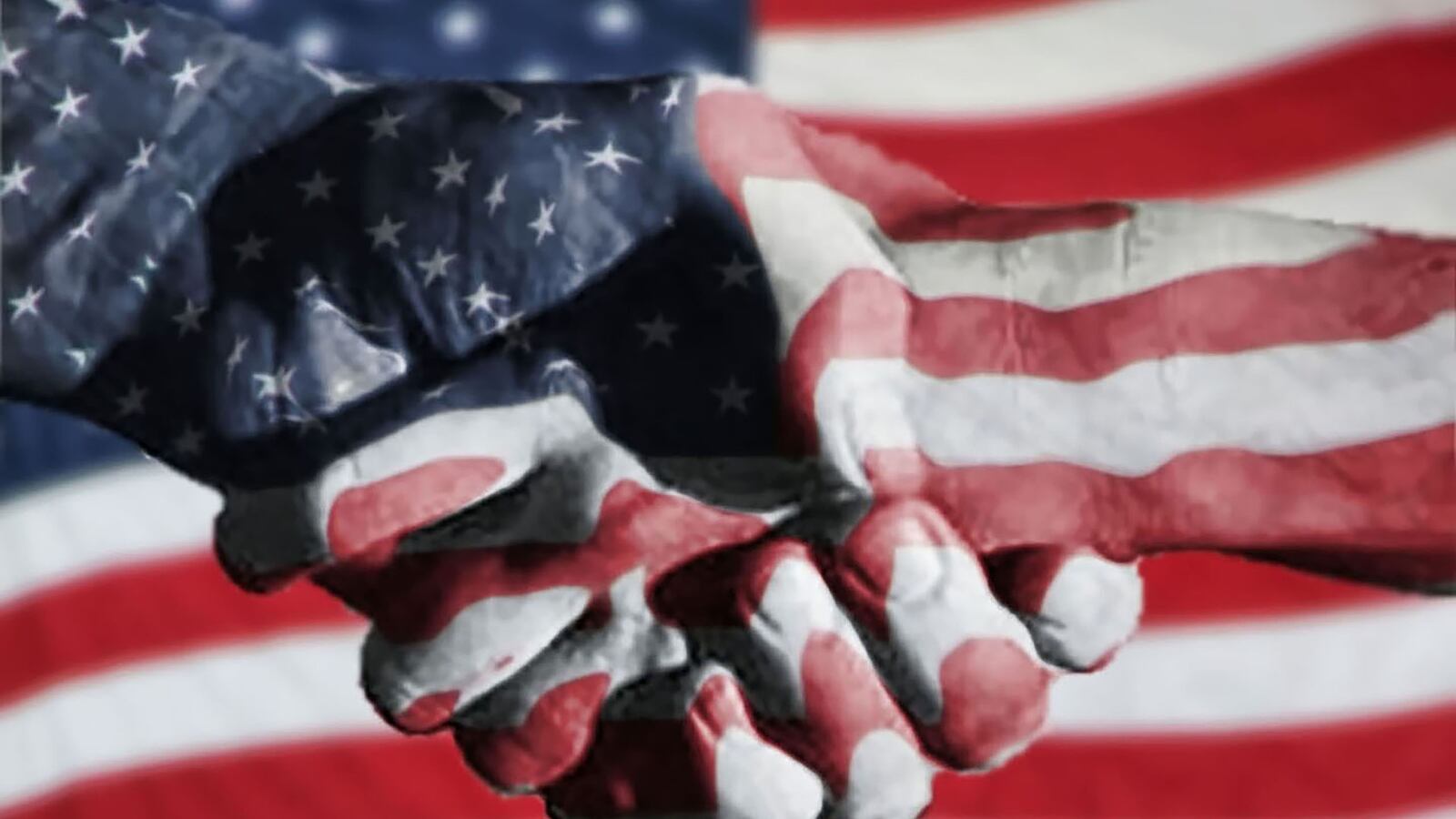Like many Americans, I’ve witnessed recent political events with the sinking feeling that our country may just be coming apart. Yet I know better than to trust the anecdotes I see on the news each day. They aren’t “fake news,” but the media is incentivized to publish more negative sensational news, given that it is what we have evolved to click on (PDF).
As the chief data scientist at Ranker, a website that crowdsources answers to tens of thousands of questions, I can see that opinions from red states and blue states on a variety of topics are actually not that far apart. While events like the recent special election in Alabama may focus us on our differences, I’d like to use some specific examples from our data to show us all what we Americans have in common. (Spoiler: People in red states and blue states generally agree on what is tasty, important, binge worthy, or entertaining.)
In order to do this, I looked at the ratio of upvotes vs. downvotes for items on a variety of Ranker lists, focusing on some of our more popular content with thousands of voters from across the country and around the world. Most voters find this content via organic searches for terms like Best Movies or Life Goals, so we end up with a fairly diverse group of voters.
I then looked at the correlation between the votes of men vs. women, millennials vs. baby boomers, Americans vs. non-Americans, and lastly people who live in red states (states that voted for Republicans in the last five presidential elections) vs. blue states (states that voted for Democrats in the last five elections). Note: Correlations can range from -1 (opposite opinions) to 1 (complete agreement).
The Results:
Best Movies of All Time
Let’s start with our list of the greatest movies of all time, as ranked by movie experts and film fans alike. This list of the top films ever made was created by taking best movie suggestions from Ranker users and letting them vote to determine which films are the best ever made.
One thing to note in all the following graphs is that the numbers are universally positive and of reasonable magnitude such that you would say there is significant agreement across all groups. However, there is more agreement among some groups than others. You’ll notice that in the graph below (and in all graphs), Americans have a lot more in common across the red state-blue state divide compared to non-Americans.
Interestingly, both men/women, and red states/blue states show high agreement here. For instance, women overwhelmingly upvote Driving Miss Daisy, but men still think it’s a good movie and are 16 percent more likely to upvote this movie on this list. Driving Miss Daisy is also far more popular in red states (a 4 to 1 upvote/downvote ratio), but people in blue states still upvote it more than downvote it.
The Matrix shows the opposite pattern, being more popular in blue states and among men, but still appreciated in red states and among women. While there may be differences in magnitude, people can appreciate a quality film across these differences more so than the young vs. old or people across countries, where people may have vastly different experiences due to culture and geography.

Best TV Shows of All Time
The correlations for this list are similar to movies as you still see differences across generations and country dwarfing differences based on gender and red states vs. blue states. While there may still be shows like Home Improvement, which is more popular in red states, or Breaking Bad, which is more popular in blue states, both are appreciated across ideology, as are most good TV shows.
Put another way, the top 25 shows for red-state voters all have positive vote ratios for blue-state voters. The reverse is almost true except for The Odd Couple and The Sopranos, which each got slightly more downvotes from red-state voters.

Best Candy
Looking at our list of The Best Candy Ever Made, again we see that young vs. old and American vs. non-American divisions are more drastic. In contrast, red-state and blue-state voters have the highest agreement in this category. In case you’re curious, red-state voters prefer the chocolate covered peanut, whereas blue-state voters preferred the simple cookie.

Most Important Life Goals
Here we see broad agreement across groups. Interestingly, unlike other categories, the young and the old show the most similarity here, more so than men vs. women, who disagree somewhat on the importance of “Getting Respect from Others” (more men) and “Peace of Mind” (more women). Red-state voters are more likely to see “Pursuing Ideals & Passions” as important, while blue-state voters prefer “Having Confidence & Autonomy.” Yet both see merit in the top life goals of the other, with the exception of more religious goals (e.g., “Christian Values”).

Celebrities Who Should Run for President
In every previous case, red-state and blue-state voters were first or second in terms of agreement. Further, the ideological divide among Americans was smaller in every case as compared to the divide between Americans and non-Americans, indicating that Americans have more in common with each other, regardless of party.
However, I wanted to try a stricter test and examine something with a political dimension: our list of celebrities who should run for president (recently featured on Ellen). Even here, there is relative agreement among blue-state and red-state voters. Yes, red-state voters are more likely to vote for Clint Eastwood, Chuck Norris, and Tom Selleck, with blue-state voters disagreeing more than agreeing for each.
But aside from those celebrities, there is agreement across states that Ellen DeGeneres and Tom Hanks would make good presidents (with Ellen being slightly more popular in blue states and Hanks in red states). Of course, that would almost certainly change if they actually ran for office and were the subject of partisan attacks, but without the normal political process, there is surprising agreement here. Perhaps most importantly, there is also widespread agreement that Courtney Love, Sean Penn, Kim Kardashian, RuPaul, JAY-Z, Jim Carrey, Eminem, and Nicki Minaj are poor presidential choices.

In addition to my work with Ranker, I maintain an academic career studying how to bring people together through CivilPolitics.org. One thing we are currently exploring is what psychologists call the Extended Contact Effect (PDF). For instance, if I tell a close work colleague who happens to harbor a bias against Muslims that my best friend is Muslim, that colleague could begin to rethink his viewpoint about Muslims.
We are interested in how this plays out in a media environment where all we hear about is how divided we are and how conflict between liberals and conservatives is constant. The truth is that when liberals and conservatives get to know each other at a personal level, they generally find that they have a lot in common and that often lays the groundwork for the kind of functional political environment that we all wish we had.
So let’s not lose sight of the fact that while Americans may disagree about some political issues, we actually do agree about what entertains us, what we find tasty, what is important, and who we admire, among thousands of other things we poll at Ranker. As the holidays approach and many of us find ourselves spending time with relatives who disagree about political issues, perhaps we can also keep in mind all the things we have in common as well.






